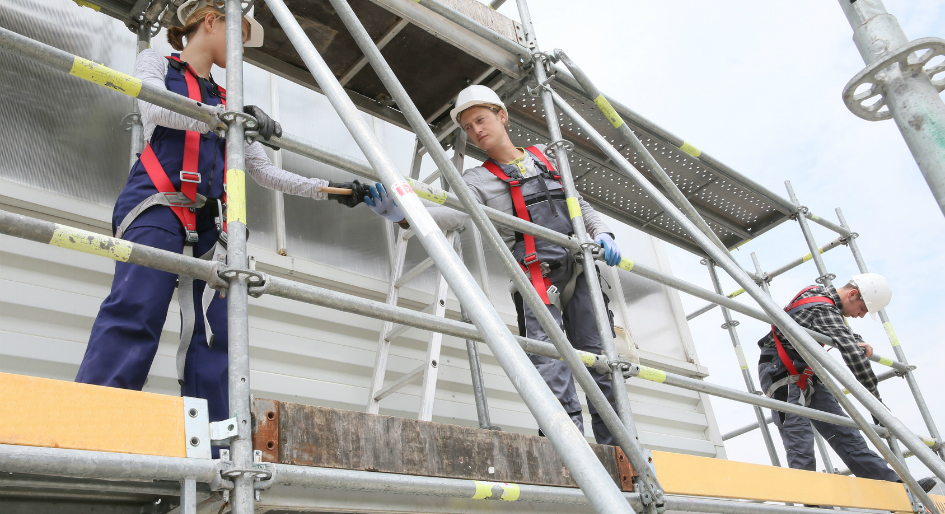Now more than ever, condo corporations are at a heightened risk of legal exposure as employers as a result of an important decision handed down by the Ontario Court of Appeal in 2017 that provided interpretation around the “general duty” clause 25(2)(h).
Employers know they must “take every precaution reasonable for the protection of a worker,” a standard mandated in the Occupational Health and Safety Act (OHSA), however the judge in Ontario (Labour) v. Quinton Steel (Wellington) Limited, 2017 ONCA 1006, stated that, “compliance with regulations may not be enough” to comply with 25(2)(h).
To put it bluntly, it appears that compliance to the Act and Regulations may not necessarily represent the entirety of an employer’s obligations, and that employers may be required to go above and beyond the minimum legislated standards. Compliance with the Act and Regulations no longer means you are necessarily risk-free. The legislated requirement of “general duty” must look at the circumstances and need for every reasonable precaution, legislated or not.
Tragically, in the above noted case from 2012, a welder employed by Quinton Steel died after falling six-and-a-half feet, or two metres, from one of the A-frame platforms, below the height at which tying off was considered required. The Ontario regulation that applied to the workplace had no provisions relating to scaffolds (to which the A-frame platform was similar) or temporary platforms; however, the regulations applicable to construction projects required that a guardrail be erected around a scaffold when working at 2.4 metres (eight feet) or above.
The employer faced charges, but a trial and appeal justice dismissed them, stating that the applicable OHSA regulation dealing with guardrails did not require them to be at a height of six feet in this specific situation. The lower court’s argument maintained that the general duty clause cannot be used by the Ministry of Labour to levy requirements greater than those in the OHSA and Regulations.
The Ontario Court of Appeal disagreed, noting that the trial justice failed to address whether the guardrails system in place was a reasonable precaution.
In Ontario (Labour) v. Quinton Steel (Wellington) Limited, 2017, ONCA 1006, the judge said:
[44] “But prescriptive certainty is not required in the context of regulatory offences such as s. 25(2)(h). That section establishes a standard, rather than a rule, the requirements of which are tailored to suit particular circumstances. Employers must take every precaution reasonable in the circumstances in order to protect workers. Reasonableness is a well-known legal concept that is interpreted and applied in a wide variety of legal contexts. Its use in s 25(2)(h) does not give rise to intolerable uncertainty”.
[45] “It may not be possible for all risk to be eliminated from a workplace, as this court noted in Sheehan Truck, at para. 30, but it does not follow that employers need do only as little as is specifically prescribed in the regulations. There may be cases in which more is required – in which additional safety precautions tailored to fit the distinctive nature of a workplace are reasonably required by s. 25(2)(h) in order to protect workers. The trial justice’s erroneous conception of the relationship between s. 25(2)(h) and the regulations resulted in his failure to adjudicate the s. 25(2)(h) charge as laid”.
The subsequent decision means that an employer can comply with all of its obligations under the regulations under OHSA and yet still be prosecuted under the “general duty” clause, even where the charges impose obligations that are greater than those set out in the Act.
The general duty clause therefore requires all employers, whether they are condos, property managers, property management companies, contractors or service providers to the condominium industry to “take every precaution reasonable in the circumstances” using the Act and Regulations, along with precautions to address each working circumstance.
Now more than ever, the risks are too high to ignore.
Roger Tickner will be a panel member on the topic of condo safety for boards and property managers at the inaugural CAI Canada Conference & Expo, taking place on Feb. 7, 2019.






Good article. I agree, now more than ever employers need to be more diligent in determining hazards and more importantly, the control measures needed for the protection of the workforce and the workplace. The recent exponential increase in provincial fines along with federal criminal code poses a liability for employers never before seen in Canada. For years there has been an emphasis in enforcement and regulatory standards in the construction sector. We are now starting to see a shift into the Industrial Sector that impacts every employer from Offices and Warehouses to Retail and Restaurants.
I live in a 30 floor high rise downtown toronto, we have one working elevator, who do i contact to file a health and safety complaint.
I live in a condominium and I am a owner for 48 years. We have quite a few health and safety, and maintenance issues here at our condominium. I have reported these issues many times to management, and board of directors only to have concerns fall upon deaf ears. We are completely ignored, and treated rudely. Need help please…